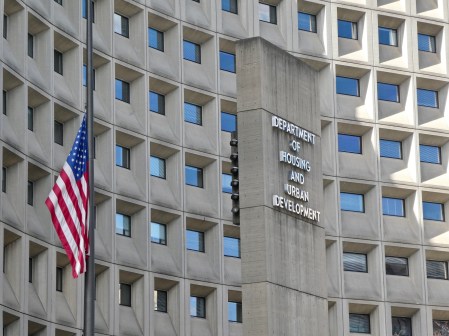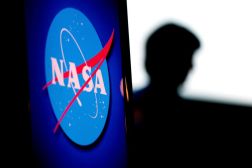NASA is going to put a man on an asteroid in the next dozen years, and, like Uncle Sam, it wants you to help.
Mason Peck, chief technologist of the agency with a long tradition of crowdsourcing and public engagement, took to Reddit on Tuesday afternoon for his second “Ask Me Anything” session in as many months.
Although he dodged some questions — “Do you think the suit and tie was a wise choice for this audience?” and “What did Apollo 17 see over the moon? I know NASA will never tell the public they have made contact with other life. So what’s the explanation you guys are sticking with?” — Peck did outline how the U.S. is planning to deflect potentially catastrophic asteroids, and how and why the U.S. is going to put an asteroid into the moon’s orbit and then land humans on it.
“We’ll visit an asteroid by 2025 to teach ourselves how to visit Mars a decade later,” Peck declared, adding if a suitable asteroid is found soon, a spacecraft could be there as early as 2021.
Currently, he said, NASA has detected 95 percent of the asteroids larger than 1,000 meters.
“But there are thousands within that range, large enough to strike the Earth but too small to have been detected yet,” he wrote. Case in point: asteroids such as the 17-meter one that recently exploded over Russia, blowing out windows in 7,200 buildings across six cities. And that was after the atmosphere absorbed most of the energy released when it hit the atmosphere, which registered as 20 to 30 times greater than that of the atomic bomb dropped on Hiroshima in World War II.
Only 1 percent of asteroids such as the one over Russia — smaller than 100 meters — have been identified. To identify these dangerous, yet undercover asteroids, NASA established the “Grand Challenge” on June 18. It’s a partnership across countries, with the private sector, and most important to Reddit, with “citizen scientists.”
“Through the Grand Challenge, we’re looking for YOU to help NASA find them,” Peck wrote.
The Grand Challenge advances NASA’s goal to get an asteroid into lunar orbit — its “Asteroid Initiative” (which will be the theme of a June 27 Google Plus Hangout). The agency is targeting an asteroid between 7 and 10 meters to rope into the moon’s gravitational pull.
“There are a few asteroids we already know about, but none are baselined,” Peck wrote. The program’s initiatives are fully funded by the president’s 2014 budget.
The asteroid initiative plans to launch a robotic spacecraft — built from mostly hardware NASA already has or is working on — able to alter an asteroids path “into an orbit near the moon,” Peck wrote. With this asteroid consistently “accessible,” it can be an ideal testing ground for technologies and systems being built for future space travel.
“The moon is relatively convenient and safe, compared to trying out these systems for the first time in Mars orbit,” Peck wrote. “So, this is a very cost-effective and yet ambitious way to make a lot of progress toward exploring Mars.”
Specifically, NASA plans to send the first robotic spacecraft powered by solar-electric propulsion. It’s a technology Peck believes will be applicable across NASA’s various initiatives as well as in the commercial space industry. “This is a bold move, depending on a technology demo,” he wrote. “That audacity recalls Apollo and the other work that has made NASA great.”
And with proper resources, NASA would even consider putting a human habitat on an asteroid. “The benefits to human exploration are very clear here, even without adding a habitat: We’ll learn about how to help astronauts survive the deep-space radiation environment, and we’ll learn how to operate long-term life-support systems, how to navigate outside Earth orbit, and the list goes on,” Peck wrote.
But of course, what Peck’s “AMA” really came down to was the fatalist question everyone wonders about, “If an [sic] meteorite (similar to the one that recently hit Russia) was headed towards Time [sic] Square or Washington D.C., how much time would you need to deflect it? What could be done about it?”
Off the top of his head, Peck guessed it might take a small spacecraft a few months of using its thrusters to alter the course of an asteroid of that size. But, he emphasized, the planning before the spacecraft could be launched would be more considerable. Which makes research in efficient propulsion and high-precision navigation critical to such a mission’s success.
Another idea Peck proposed would be “to change the spectral properties (color, brightness) of the asteroid to encourage solar pressure to nudge it out of Earth’s way.”
But even this question came back to “YOU,” making this initiative just another link in the long line of NASA’s citizen engagement. Previously, the agency has solicited the public’s ideas on harvesting energy aboard the International Space Station, and asked people to analyze the deluge of photos returning from Mars over the years.
“We’re looking for other good ideas as part of the Grand Challenge, ideas that individuals or institutions like universities could demonstrate in small scale,” Peck wrote.





